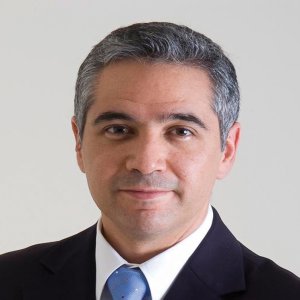Chemical Innovation Continues Despite Sourcing Troubles

Chemical Innovation Continues Despite Sourcing Troubles

STORY INLINE POST
Q: What are the main areas of interest in the Mexican chemical industry for BASF today?
MS: Mexico is an important export country as part of the North American region, and at the same time a strong market in its own right for BASF products. When I was here 20 years ago, money was leaving Mexico but now money is being invested, with generated profit being reinvested once again. I see a newfound confidence in the country that was not here 20 years ago. Moreover, capital markets have confidence in Mexico, a situation which differs from many other emerging markets that are seeing an exodus of capital. Additionally, the debt rate of the country, when compared to countries in Europe, is quite low. One of the challenges still facing the chemical industry in Mexico is a general lack of raw material access. Nevertheless, it is an exciting market that has occupied a prominent spot in the last couple of years and as such we must foster even more growth.
Q: How has the role of the chemical content in cars changed, and what are BASF’s contributions to this?
FH: Together with our partners, we are driving research and innovation to develop leading automotive solutions. These innovations will help automakers address the challenges of today and tomorrow, such as emissions reduction, heat management, passenger experience, e-mobility, weight reduction, sustainability, and fuel efficiency. We work closely with designers, engineers, and manufacturers to apply innovative ideas to develop an exceptional, sensory experience. Even the subtlest of vehicle encounters from grasping a door handle to the sheen of the exterior’s design shapes the passenger experience.
Trends are created by consumer demand, and in the end a trend is what people will pay for. One of the biggest trends right now is lightweight component development to reduce fuel consumption. The creation of innovations in this respect is often borne out of joint brainstorming sessions between automotive companies and suppliers. The chemical industry together with other suppliers has created many solutions and innovations. In terms of innovation, the automotive industry is conservative compared to other industries, and sometimes new Trends are created by consumer demand, and in the end a trend is what people will pay for. One of the biggest trends right now is lightweight component development to reduce fuel consumption. The creation of innovations in this respect is often borne out of joint brainstorming sessions between automotive companies and suppliers. The chemical industry together with other suppliers has created many solutions and innovations. In terms of innovation, the automotive industry is conservative compared to other industries, and sometimes new materials can take years to be approved. Plastic rims are an example of this.
Q: How much of a concern is the lack of access to raw materials, and what other challenges exist?
FH: The lack of raw materials has become a concern because we are heavily dependent on importation of basic raw materials for most of the primary materials that are converted into final products like paint or plastic parts. Feedstock availability is a problem, as the general chemical industry in Mexico has to import 70% and BASF imports 90%. This tripartite relationship of feedstock availability, energy costs, and logistics flow has to be fully addressed in Mexico. Also, currency fluctuation and inflation issues can negate the benefits of the very attractive labor costs in Mexico and that is a problem that needs to be balanced.
Q: BASF has six major Verbund sites worldwide, although not in Mexico. How developed are your Mexican sites today, and which areas are seeing particular investment?
MS: BASF has five major sites in Mexico, we are heavily invested in North America and have a strong presence on both sides of the border. Coatzacoalcos has become the heart of basic chemistry in Mexico and it will play a big role in the future, but our customer base is not in that area. When selecting a site, it is important for us to have both sideward and backward integration. Sideward integration means that one plant can use the waste stream of another plant as feedstock and create a balance of energy and chemical processes on site since some processes generate heat, whilst others absorb heat. Sideward integration is something that is achievable and is currently being implemented at our site in Altamira, but backward integration is impossible there because we do not have either production or access to raw materials.
Many years ago, BASF had a plan to develop a chemical production site in Tamaulipas with backward integration and access to raw materials. However this did not materialize as planned. It was an important plan for us but the site lacked backward integration and as a consequence our Altamira site was also affected, now having to import 90% of materials.



















